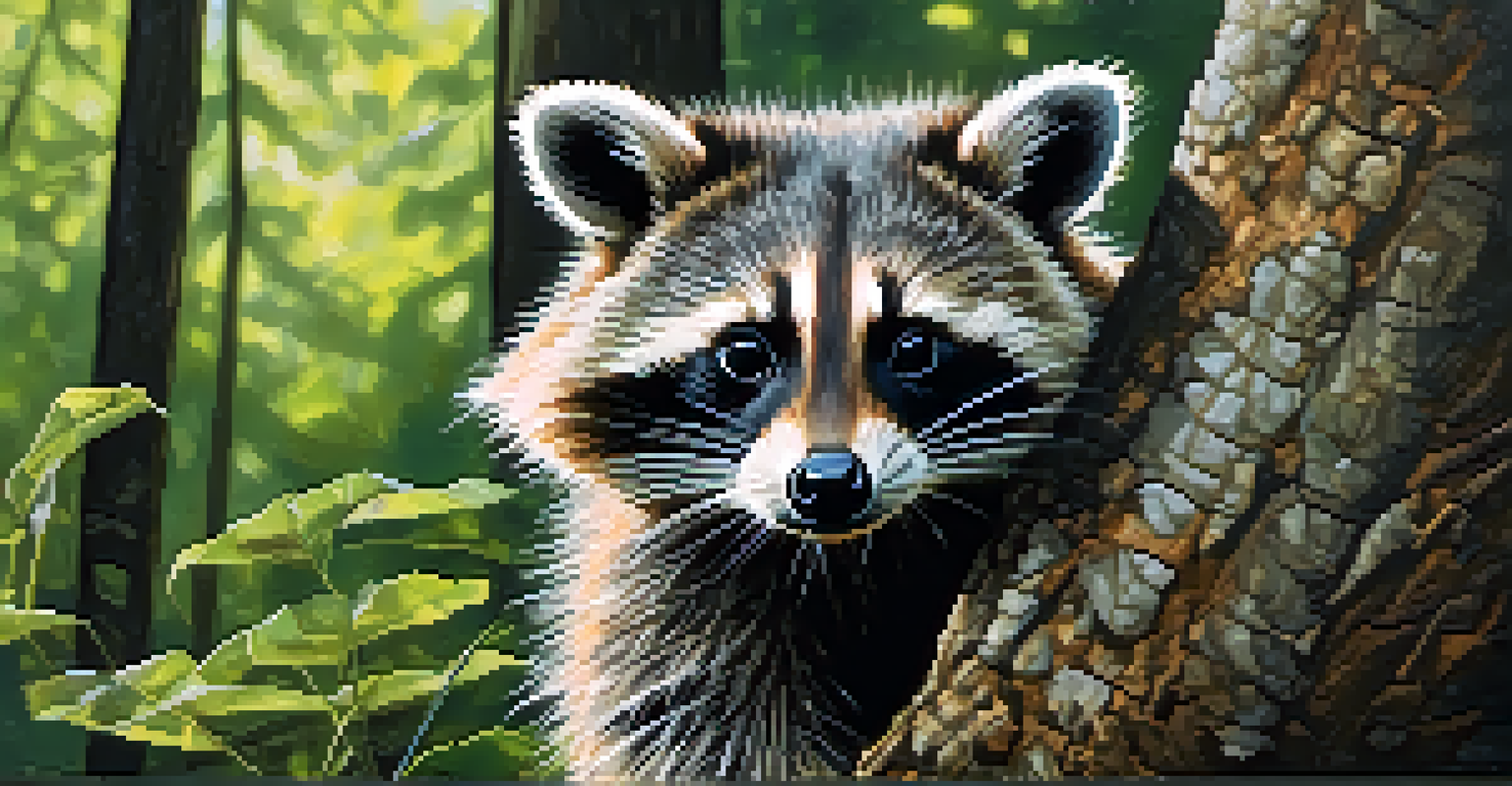Wildlife Watching in Big Bear: A Guide to Local Species

Introduction to Wildlife Watching in Big Bear
Big Bear Lake is not just a beautiful destination; it's a wildlife enthusiast's paradise. Nestled in the San Bernardino Mountains, this area is home to an array of species that thrive in its diverse ecosystems. From soaring eagles to playful raccoons, wildlife watching here offers an unforgettable experience for nature lovers.
In every walk with nature, one receives far more than he seeks.
Whether you're a seasoned birdwatcher or a casual hiker, you'll find plenty of opportunities to see animals in their natural habitats. The changing seasons provide different viewing experiences, making every visit unique. So, grab your binoculars and let’s dive into the wonderful world of Big Bear’s wildlife.
In this guide, we’ll explore the most common species you might encounter, tips for spotting them, and the best locations for wildlife watching. By understanding these creatures and their environments, you’ll enhance your outdoor adventures in Big Bear and foster a deeper appreciation for nature.
Birds of Big Bear: Feathered Friends in the Sky
The skies over Big Bear are alive with a variety of bird species, making it a fantastic destination for birdwatching. You might spot majestic bald eagles soaring high or colorful western bluebirds flitting about in the trees. With over 200 species recorded in the area, there’s always something new to see.

Spring and fall migrations bring an influx of birds, so plan your visit during these seasons for the best chance to see rare species. Many local parks and hiking trails provide excellent vantage points for observing these feathered friends. Don’t forget to bring a field guide to help identify the different species you encounter.
Diverse Wildlife Awaits in Big Bear
Big Bear Lake offers a rich variety of wildlife, including birds, mammals, reptiles, and amphibians, making it an ideal destination for nature enthusiasts.
Whether you’re hiking around the lake or relaxing at a picnic spot, keep your eyes peeled and your ears open. The calls of a red-tailed hawk or the chirping of a finch can lead you to an exciting sighting. Birdwatching not only enriches your experience but also connects you to the vibrant ecosystems in Big Bear.
Mammals of Big Bear: Fur and Fun in the Forest
In addition to birds, Big Bear is home to a variety of mammals that roam the forests and mountains. From black bears to friendly squirrels, these creatures add to the charm of the area. One of the most iconic sights is the black bear, often seen foraging for food, especially in the warmer months.
The wildlife and the natural world are not ours to control or own, but to respect and preserve.
While black bears are fascinating, it's important to remember to observe them from a safe distance. Other mammals you might encounter include deer, coyotes, and bobcats. Each species plays a vital role in the ecosystem, and spotting them can be thrilling.
To increase your chances of seeing these animals, consider exploring less-traveled trails and visiting during dawn or dusk when they are most active. Remember to tread lightly and respect their habitats, ensuring that future generations can enjoy wildlife watching in Big Bear as much as you do.
Reptiles and Amphibians: The Hidden Wonders
While birds and mammals often steal the spotlight, Big Bear is also home to a variety of reptiles and amphibians. From the elusive rattlesnake to vibrant frogs, these creatures are an essential part of the local ecosystem. Exploring their habitats can reveal fascinating behaviors and adaptations.
During warmer months, keep an eye out for lizards basking on rocks or snakes slithering through the underbrush. Amphibians, such as the California red-legged frog, are often found near water sources, making lakes and streams prime spots for observation. Understanding these species helps paint a complete picture of Big Bear's wildlife.
Best Spots for Wildlife Watching
Key locations like the Alpine Pedal Path and San Bernardino National Forest provide excellent opportunities for observing local wildlife in their natural habitats.
When observing reptiles and amphibians, it’s crucial to respect their space. Avoid disturbing their habitats and always keep your distance. By doing so, you contribute to the conservation of these often-misunderstood creatures and foster a greater appreciation for the biodiversity in Big Bear.
Best Locations for Wildlife Watching in Big Bear
To maximize your wildlife watching experience, it’s essential to know the best spots in Big Bear. The Big Bear Lake area boasts numerous trails, parks, and vantage points perfect for spotting various species. The Alpine Pedal Path is a favorite among birdwatchers, offering stunning lake views and a chance to see diverse birdlife.
Another great location is the San Bernardino National Forest, where you can find well-maintained trails that lead to different habitats. Places like Pine Knot Trail provide ample opportunities to see both mammals and birds in their natural settings. Don’t forget to visit the Big Bear Discovery Center for additional resources and information on local wildlife.
Planning your wildlife watching excursions around the time of day can also enhance your chances of encounters. Early mornings and late afternoons are typically the best times to see animals, as they are most active during these hours. With a little preparation, you can create memorable moments in the wild.
Tips for Responsible Wildlife Watching
While wildlife watching is an exciting activity, it’s essential to do so responsibly. Always maintain a safe distance from animals, as approaching them can cause stress and alter their natural behaviors. Use binoculars or a zoom lens for a closer view without intruding on their space.
Additionally, follow the Leave No Trace principles, which emphasize the importance of minimizing your impact on the environment. This includes staying on marked trails, packing out all trash, and being mindful of noise levels to avoid disturbing wildlife. Respecting these guidelines ensures that Big Bear remains a thriving habitat for its diverse species.
Responsible Wildlife Observation Tips
Practicing responsible wildlife watching, such as maintaining distance and following Leave No Trace principles, ensures the protection of Big Bear's ecosystems.
By being a responsible observer, you help protect the wildlife and their habitats for future generations to enjoy. Remember, the goal is not just to see these incredible creatures but to appreciate and understand them in their natural environment.
Conclusion: Embrace the Wildlife Experience in Big Bear
Wildlife watching in Big Bear is more than just a hobby; it's an opportunity to connect with nature and learn about the incredible species that inhabit this beautiful area. From majestic birds to playful mammals, each encounter can leave a lasting impression and deepen your appreciation for the natural world.
As you embark on your wildlife watching adventures, remember to respect the creatures you encounter and the ecosystems they inhabit. With a bit of patience and a sense of wonder, you’ll find that every visit can offer new surprises and insights.

So, whether you're hiking a trail, sitting by the lake, or simply enjoying the tranquility of Big Bear, take the time to observe and appreciate the wildlife around you. Embrace the experience, and let the beauty of nature inspire you on your journey.